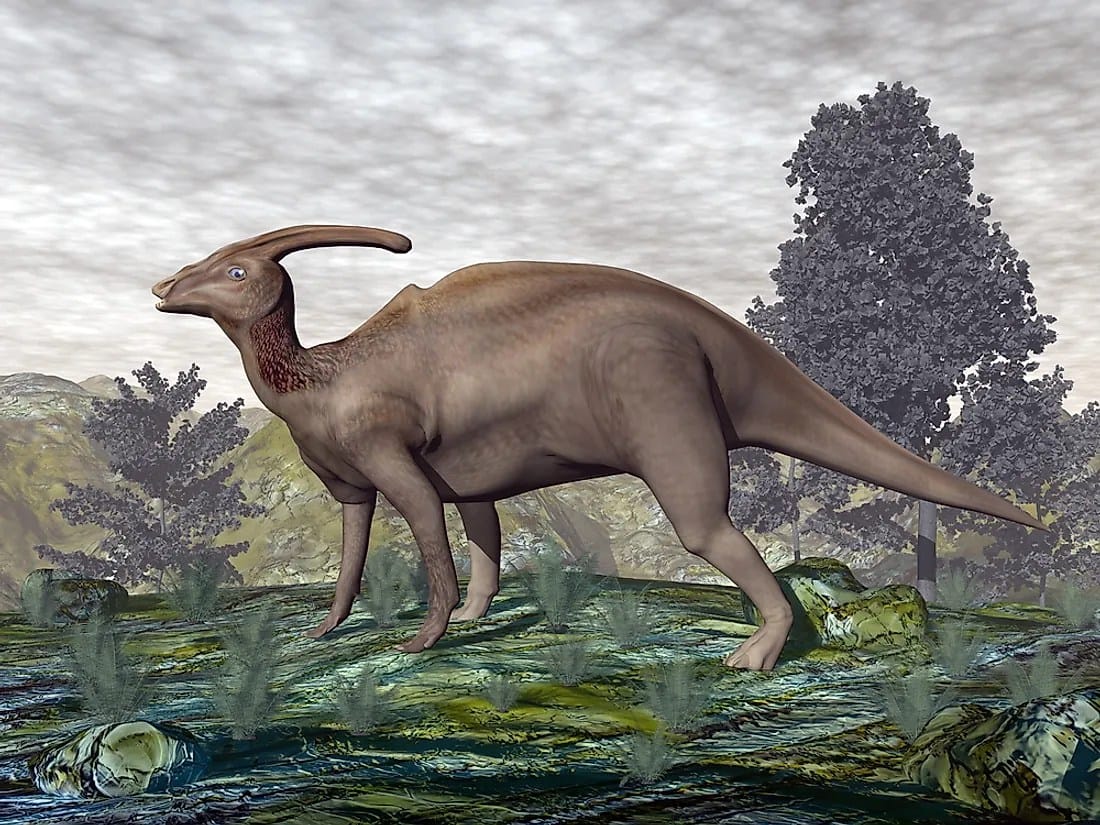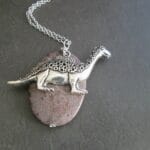Conquering Dinosaur Names: Parasaurolophus Edition
We’ve all been there—staring at a dinosaur name that looks like it’s from another planet. Trying to pronounce some of these prehistoric creatures can be a mouthful! But fear not, even the trickiest dinosaur names can be mastered with a little practice. Today, we’re tackling one of the coolest-looking dinosaurs with a name that’s equally impressive: Parasaurolophus!
Deconstructing the Dino’s Name
Let’s break down the pronunciation of “Parasaurolophus” syllable by syllable:
pa-ruh-sawr-o-lo-fus
See? Not so scary! Just remember to emphasize the third syllable, “SAWR.”
Why is Accurate Pronunciation Important?
You might wonder why getting the pronunciation right even matters. For starters, it helps us better appreciate and understand these magnificent creatures. Just like learning a new friend’s name, correctly pronouncing a dinosaur’s name shows respect for these incredible animals that once roamed the Earth. Plus, it’s a surefire way to impress your friends with your dino-knowledge!
Unlocking the Secrets of the Crest
Now that you’ve mastered the pronunciation, let’s explore what makes the Parasaurolophus so unique—that incredible, long, curved crest on its head! Scientists believe this crest wasn’t just for looks. It likely played a vital role in the dinosaur’s communication. Think of it like a built-in trumpet, amplifying their calls across long distances. Some experts even suggest that the crest’s shape and size may have differed between males and females, perhaps for attracting mates or identifying each other.
Delving Deeper into the World of Dino Names
The world of dinosaurs is brimming with fascinating names, each with its own story to tell. Exploring the origins and meanings of these names can enhance our appreciation for these ancient animals and the scientists who study them. For instance, “Parasaurolophus” originates from Greek words meaning “near crested lizard,” referencing its close relationship to another dinosaur with a similar, but smaller, crest.
Embark on Your Jurassic Journey
Mastering dinosaur names is just the beginning of an incredible journey into the prehistoric past. So keep exploring, keep asking questions, and keep practicing those pronunciations!
How do you pronounce Parasaurolophus in the UK?
So, you’ve conquered “Archaeopteryx,” but now “Parasaurolophus” has your tongue tied? You’re not alone! This dinosaur, famous for its remarkable head crest, often trips people up. In the UK, the commonly accepted pronunciation is “par-uh-saw-RAH-luh-fus.” Notice the emphasis on the “RAH”? That’s the key!
It might feel tricky initially, but think of it like a musical piece, with “RAH” as the high note. Once you’ve said it correctly a few times, you’ll feel like a true paleontologist!
Why Does Pronunciation Matter?
You might be thinking, “Does it really matter how I pronounce it?” Well, using the accurate pronunciation demonstrates respect for these incredible creatures from the past. It shows you care and that you’re taking the time to understand them. And wouldn’t you want to confidently pronounce the name of such a unique dinosaur, especially when engaging with fellow dinosaur enthusiasts?
More Than Just a Name: The Secrets of the Crest
Speaking of unique, let’s talk about that amazing crest on Parasaurolophus’s head. It’s not just for show! Scientists have long been puzzled by its function. Some theorize that it acted like a giant trombone, allowing Parasaurolophus to produce deep, resonating calls that could travel far and wide. Imagine a whole herd communicating like that—prehistoric surround sound!
Other researchers suggest that the crest was more about visual display, perhaps to attract mates or intimidate rivals. Who knows, maybe it was a combination of both! There’s still so much we’re learning about dinosaurs and their fascinating adaptations.
The Meaning Behind the Name
Like many dinosaur names, “Parasaurolophus” has its roots in Greek, translating to “near crested lizard.” It’s a nod to another dinosaur with a similar, though smaller, crest.
Embrace the Dino Lingo
Learning how to pronounce dinosaur names like “Parasaurolophus” might seem like a small thing, but it’s a gateway to a deeper appreciation for these amazing creatures and the scientists dedicated to uncovering their secrets. You might even inspire someone else to learn about dinosaurs just by confidently rattling off their names!
Is it Parasaur or Parasaurolophus?
While “Parasaur” might seem like a quicker, easier way to refer to this dinosaur, it’s actually just a nickname. The full, official name is Parasaurolophus.
Let’s break down the pronunciation into manageable bites:
- Pa-ruh: This part is straightforward.
- Sawr: Just like the tool for cutting wood.
- Oh: A simple “oh,” like in “bone.”
- Lo: Rhymes with “slow.”
- Fus: Sounds like “fuss.”
Put it all together, and you get Pa-ruh-sawr-oh-lo-fus!
“Parasaurolophus” comes from Greek and means “near crested lizard,” referencing the dinosaur’s most prominent feature—that long, curved crest extending from its skull. This distinctive crest is what gives the Parasaurolophus its unique profile and has sparked endless debates among scientists about its potential functions.
What Does Parasaurolophus Mean in English?
In simple terms, “Parasaurolophus” translates to “near crested lizard.” The “crested” part refers to that big, curved crest on its head. And the “lizard” part? Well, dinosaurs are kind of like ancient relatives of lizards.
Now, about that “near” business. When scientists first discovered Parasaurolophus, they thought it was a close relative of another dino called Saurolophus, which also had a crest. However, further research revealed they weren’t as closely related as initially thought.
The name stuck, even though it’s a bit misleading. And let’s be honest, “near crested lizard” sounds way cooler than just “Saurolophus’s distant relative.”
Why the Fuss About a Name?
Names are important in paleontology. They help scientists categorize and understand relationships between different species. And sometimes, those names can tell us a lot about the animal itself.
The name Parasaurolophus hints at what this dinosaur might have looked like and even how it might have behaved. Some scientists believe its crest could have been used to make sounds, perhaps even like a trumpet!
The Mystery Continues…
While the meaning of “Parasaurolophus” is pretty straightforward, there’s still much we don’t know about this dinosaur. How did it use its crest? What did it sound like? What color was it? These are all questions that scientists are still trying to answer.
So, the next time you hear someone mention “Parasaurolophus,” impress them with your newfound knowledge!
Key Points:
- Pronunciation: “Pa-ruh-sawr-o-lo-fus” with emphasis on “SAWR.”
- Importance: Accurate pronunciation shows respect and enhances understanding.
- Unique Crest: Likely used for communication, amplifying calls.
- Etymology: “Near crested lizard,” referencing a relative with a smaller crest.
- Exploring Dino Names: Deepens our appreciation for these prehistoric creatures.
Looking for a great way to boost your brainpower? Check out our selection of nootropic drinks specially engineered to enhance cognitive function.
Interested in learning more about the critically endangered Mekong giant catfish? Discover more about the pangasianodon gigas and the conservation efforts underway to protect this magnificent species.
- Revolution Space: Disruptive Ion Propulsion Transforming Satellites - April 24, 2025
- Race Through Space: Fun Family Game for Kids - April 24, 2025
- Unlocking the Universe: reading about stars 6th grade Guide - April 24, 2025
















